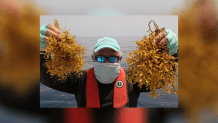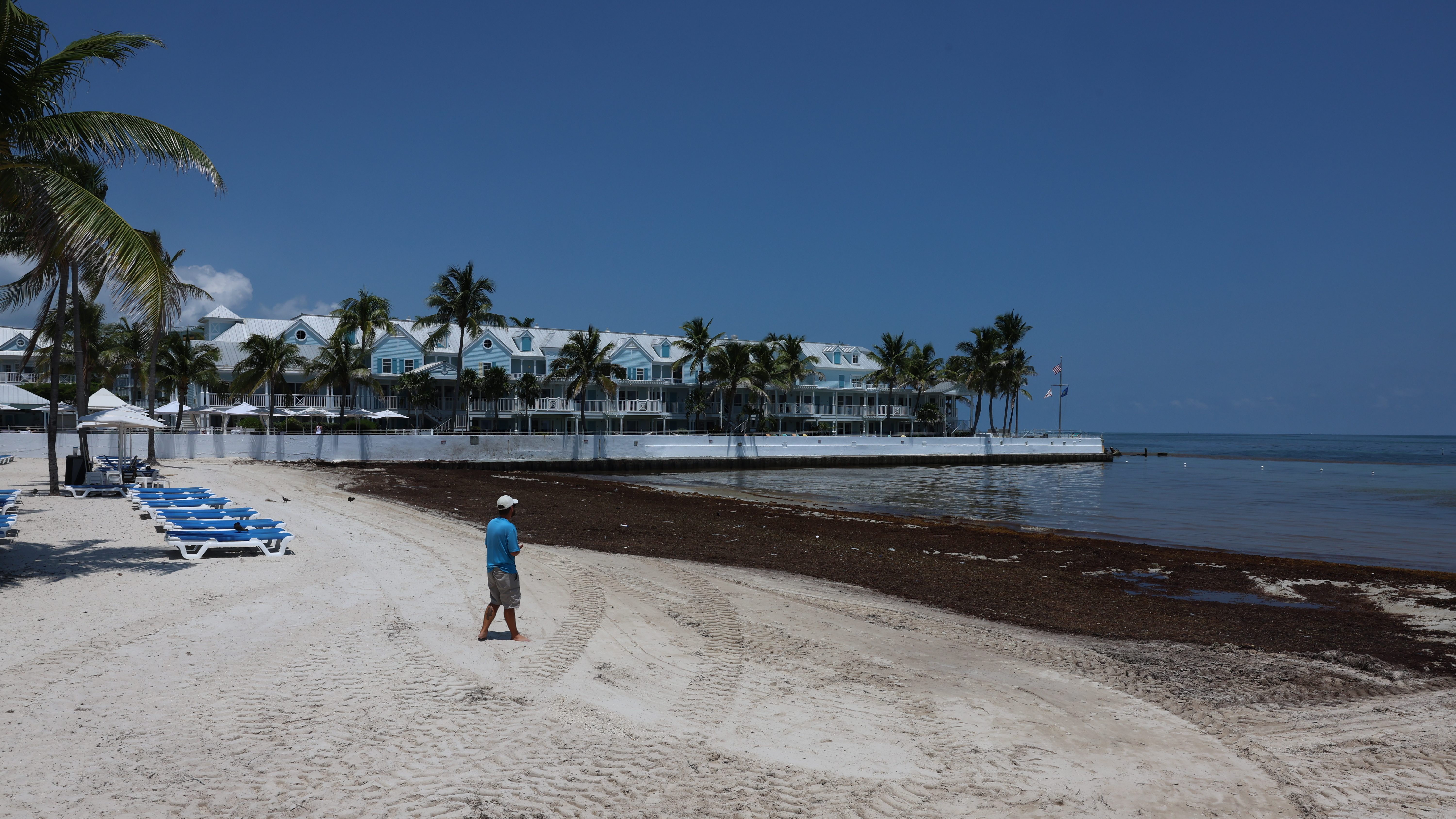Many in South Florida are already familiar with the massive, smelly blob of brown seaweed that shows up on Florida beaches during the warmer months.
It's called sargassum and scientists say the blob is growing. According to an article published by Florida Atlantic University, in the last decade, the Great Atlantic Sargassum Belt has wreaked havoc on ecosystems and economies throughout the Caribbean.
When these clusters of sargassum make their way to the shoreline, it can create an unpleasant experience for beachgoers and when it decomposes on beaches, it not only smells bad, but also attracts insects and can cause many environmental problems, such as fish kills and smothering turtle nesting sites, according to the University of South Florida's satellite-based Sargassum Watch System (SWS),
That's why it needs to be cleaned up in a timely manner.
Get South Florida local news, weather forecasts and entertainment stories to your inbox. Sign up for NBC South Florida newsletters.
Sargassum
Researchers from Florida Atlantic University's Harbor Branch Oceanographic Institute got a $1.3 million grant from the Florida Department of Emergency Management for a project assessing the feasibility of in-water harvesting of this floating brown seaweed in Florida.
The FAU Harbor Branch project, “Mitigating sargassum Inundation Impacts to Nearshore Waters and Beaches in Florida,” will examine both environmental and ecological impacts of sargassum inundations in Florida.
“Sargassum is becoming a devastating mainstay in parts of Florida’s coastal communities, particularly in the Florida Keys, where massive blooms continue to recur,” said Brian Lapointe, Ph.D., principal investigator and a research professor at FAU Harbor Branch.

Dr. Lapoint explained how a severe sargassum event could have "more than a $20 million impact in just the Keys alone. Environmentally, these blooms can potentially harm humans, exacerbate eutrophication (excessive richness of nutrients in a body of water), result in die-offs of seagrasses and corals, and kill recreational and commercially important species.”
Lapoint and his team will survey sargassum inundation sites and, with the help of drones, GoPro, aerial images from satellites and more, will start the removal by examining the changing physical structure of the beach.
A trial removal of sargassum will be conducted using a dip net to avoid harming marine animals and other fauna under special permits from agencies like NOAA and the Florida Fish and Wildlife Commission.
After removing the seaweed, the FAU Harbor Branch will conduct studies of "the mechanism related to arsenic bioaccumulation in sargassum."
Additionally, studies will also be done in order to understand the impact of sargassum on water quality and small fish. Shrimp and crabs will be retained for heavy metal and nutrient analysis.
“Data from this timely research will help to inform managers whether it is better to harvest sargassum in water as opposed to on the beach and help them better plan for removing vast amounts of seaweed from our beaches and preventing aggregations,” said James M. Sullivan, Ph.D., executive director of FAU's Harbor Branch.
Scientists said the southeast coast of Florida, including the Florida Keys, will be largely free of sargassum until at least late April or May.



